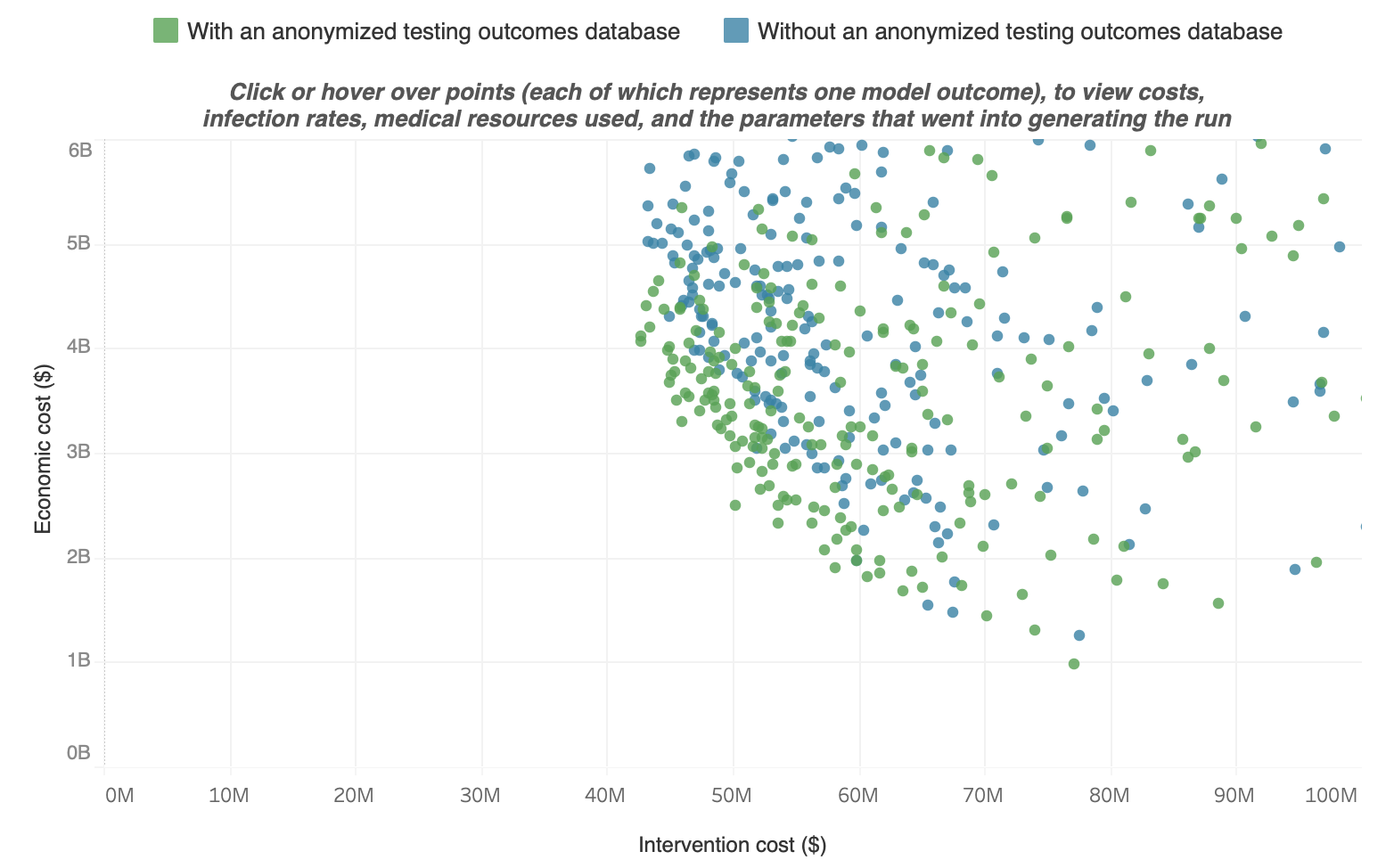Anonymized Testing Outcomes Database (ATOB) Could Increase Precision of Reopening Policies in Hawaii
Analysis Highlight:
An anonymized testing outcomes database (ATOB) that provides daily aggregated counts of asymptomatic as well as symptomatic cases could save Hawaii an additional $306 million in economic costs over non-ATOB reopening strategies.
On May 5, Governor David Ige announced that because Hawaii saw fewer than 10 confirmed cases of COVID-19 per day for two consecutive weeks, the state was ready to begin reopen the economy in phases. As his announcement indicates, plans to reopen the economy have relied heavily on the number of new symptomatic cases. Model runs, which have the benefit of reflecting the number of asymptomatic cases as well as symptomatic cases, can help refine calculations for phased reopening by better accounting for the lag between COVID-19 exposure and symptoms onset.
In a previous post, we referenced a medical intervention called an anonymized testing outcomes database (ATOB). ATOB captures the results of antigen and antibody tests and reports aggregated counts of asymptomatic as well as symptomatic cases, scrubbed of personal identifiers. An ATOB would allow future policy interventions to be more responsive to the spread of COVID-19 in asymptomatic as well as symptomatic cases, helping us better calibrate the lifting of social distancing policies in Hawaii. Setting up an ATOB would entail meager investments in tests and testing infrastructure, but could stand to save millions of dollars in economic costs by more precisely identifying when future phases of economic reopening can be implemented.
This view of the scatter plot graph distinguishes between outcomes with and without an ATOB. We estimate that a baseline scenario with an ATOB could save around $300 million in economic costs at a modest $60 to $70 million intervention cost over a baseline scenario without an ATOB. Much of these savings is due to more timely and precise lifting of social distancing and self-isolation measures informed by an anonymized database of asymptomatic cases. In short, with better information, we can continue to reopen Hawaii’s economy while still mitigating health risks.

